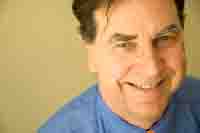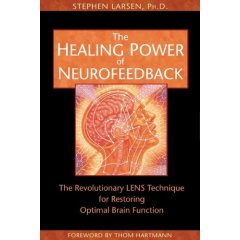Print This Page
|
Click to View All Speakers
|

Len Ochs
|
Len Ochs is a psychologist in private practice, having done biofeedback since 1975 and psychotherapy since 1966. He is considered one of the pioneers in biofeedback especially in the area of instrumentation development.
lochs@earthlink.net
925-934-4296
8151 Elphick Lane, Sebastopol, cA 95472 |

|
Pre-Conference #13): LENS Introductory Training
This is a four day introductory training in the Low Energy Neurofeedback System. Participants will learn how to operate the software which will allow them to:
1. conduct evaluations to properly select prospective clients,
2. conduct treatment sessions
3. evaluate the efficacy of treatment and revise the treatment plan
4. evaluate client sensitivity -- the cornerstone of deciding treatment dose
Participants will understand the history of the LENS approach, the results of research, and the conceptual as well as the practical considerations in its use.
Plenary #226): Neurofeedback as a Catalyst for Maturation in Rehabilitation
We are used to thinking of neurofeedback from an interventionist point of view, in which we shape the EEG. Another viewpoint is that once a person is impaired, the individual is unable to proceed by him or herself through the maturation process to regain function. Neurofeedback acts as a releaser mechanism to permit normal maturation of function by blocking the neurochemical defenses that were erected to protect the brain. Instead, however, these neurochemical defenses interfere with normal functioning. It is the brain’s seeking of normalcy that is catalyzed by neurofeedback, for which we are the midwives.
Workshop #224): The Photonic Stimulatoras an Adjunct to Neurofeedback
The Photonic Stimulators are infra red light sources that reduce pain, speed tissue regeneration, and block sympathetic nerovous system activity. As such, they help to reduce treatment time with neurofeedback with reasonable rapidity. When used in doses tied to a person's sensitivity, significant improvements can be seen.
Details:
Pre-Conference #13): LENS Introductory Training
The history LENS approach to neurofeedback, as well as its similarities and differences from traditional neurofeedback are discussed in day one, along with the essential concepts, core paradigm, principles, and areas of applicability. Dominant frequency, frequency offset, feedback frequency, sensitivity, hyper- and hypo-reactivity to stimulation, cortical permeability and integration, and structural vs. functional impairments and improvements are some of the areas covered. A first LENS session will be done with a patient to demonstrate intake and initial decision making.
: The technical historical development of the LENS hardware and software is detailed to exemplify material covered in Day 1: why flashing lights were initially used; how the hardware modernized to include microprocessors and the consequent problems that led to the discovery of the radio frequency carrier wave for the feedback – and why flashing lights were dropped. The place that accidents, errors, and mistakes had, and how they shaped the development of the modern system. The evolution of the Report generator and how it guides clinical decision making and re-evaluations. Features of the USE3 J&J Physiolab software: how to turn it on and off; features of the screen menus, session controls, display controls, saving and exporting data. A second session with the patient will be done to illustrate part of the evaluation. Practice will be given in the Offset evaluation.
Importing data, Offset and Mapping reports will be explicated, demonstrated, and illustrated in the third session with the patient. Participants will get practice in performing topographic brain maps. We will also discuss two paper and pencil questionnaires: a CNS questionnaire – the best predictor of outcome for the LENS, and a sensitivity/reactivity questionnaire which helps predict and identify variables that help select feedback dosage, as well those that may bear on abreactions during treatment. Practice in performing feedback after considering how to put together information from the Offset and Mapping evaluations. Session three with the patient will occur, demonstrating the integration of the information heard and practiced.
Discussion of issues related to client complexity; what is know, not known, guessable, and derivable from the application of evaluations and treatment. How to make a therapeutic alliance; symptom indexes; overdose vs treatment milestones and issues; re-evaluation of progress and protocol changing; topographies of healing; closing.
Plenary #226): Neurofeedback as a Catalyst for Maturation in Rehabilitation
We are used to thinking of neurofeedback from an interventionist point of view, in which we shape the EEG. Another viewpoint is that once a person is impaired, the individual is unable to proceed by him or herself through the maturation process to regain function. Neurofeedback acts as a releaser mechanism to permit normal maturation of function by blocking the neurochemical defenses that were erected to protect the brain. Instead, however, these neurochemical defenses interfere with normal functioning; and the brain of the chronically impaired is unable to refresh its own neurochemistry – a failure of evolution. It is the brain’s seeking of normalcy that is catalyzed by neurofeedback. We are there to help the brain do what it wants to do, by doing as little as we can to support it, and as little as we can to impede its recovery.
Workshop #224): The Photonic Stimulatoras an Adjunct to Neurofeedback
The Photonic Stimulator is an infrared light that reduces pain, promotes tissue growth, and reduces sympathetic nervous system activity. As an adjunct to neurofeedback is provides palliative support by reducing pain that barrages the central nervous system and disorganizes the brain’s ability to accurately map and characterize afferent somatic impulses. It reduces anxiety and irritability indirectly by reducing pain. It raises the tic and seizure thresholds by blocking sympathetic afferents, thereby synchronizing the EEG. Practically, it provides enormous relief through pain and anxiety reduction, supports concentration and attention, and reduces ritualistic compulsive associated with chronic pain. This workshop provides an overview of the great variety of photonic stimulators, laser and otherwise, as well as an introduction to how they work.
Contact Info:
Len Ochs
8151 Elphick Lane
Sebastopol, California 95472
phone: 925-933-4296
|
Click to View All Speakers
|

